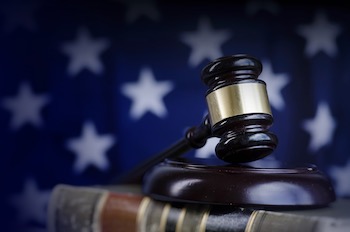 Diamond v. Diehr specifically warned about §102 improperly influencing the §101 analysis, so a §101 analysis was presumably considered separate from a §102, §103 or §112 analysis. Fast forward a little more than a generation. In 2012, Mayo Collaborative Services v. Prometheus Laboratories, Inc. was decided by the Supreme Court, which appeared to disregard the warning of Diamond v. Diehr.
Diamond v. Diehr specifically warned about §102 improperly influencing the §101 analysis, so a §101 analysis was presumably considered separate from a §102, §103 or §112 analysis. Fast forward a little more than a generation. In 2012, Mayo Collaborative Services v. Prometheus Laboratories, Inc. was decided by the Supreme Court, which appeared to disregard the warning of Diamond v. Diehr.
Mayo v. Prometheus addressed the question of whether two patents concerning the use of thiopurine drugs to treat autoimmune diseases satisfied the §101 requirement. The Supreme Court ended up holding that the patents were invalid under §101. But its reasoning confused many patent practitioners and litigators. Justice Breyer, writing for a unanimous Court, stated that, because the steps of “administering” and “determining” were well known and conventional, they were not patent-eligible subject matter. This analysis seems to combine the requirement of patent eligibility with that of novelty and nonobviousness. In other words, in Mayo, the Supreme Court did a corollary of what it specifically warned against doing in Diehr.
In the years since Mayo, the Supreme Court has further embarked down the path to modify §101 precedent, in Myriad and Alice. Since the Mayo decision, district courts have been disposing cases on motions to dismiss under §101. The presumption of patent validity is nonexistent in the review of a §101 motion to dismiss, and the decisions are reached by the district court without the benefit of discovery and without having interpreted the claims. What this means is that, in many patent-eligibility appeals, §101 is the only issue available to discuss because it is the only issue that has been considered.
The failure to presume patents to be valid at the early stage of a motion to dismiss is dismaying. Patents are presumed valid pursuant to 35 U.S.C. 282, but for some reason when the question is about patent eligibility, that presumption does not attach. Specifically, §282(a) states:
A patent shall be presumed valid. Each claim of a patent (whether in independent, dependent, or multiple dependent form) shall be presumed valid independently of the validity of other claims; dependent or multiple dependent claims shall be presumed valid even though dependent upon an invalid claim. The burden of establishing invalidity of a patent or any claim thereof shall rest on the party asserting such invalidity.
Nowhere in §282 does it say that patents are presumed valid unless patent eligibility is challenged. Yet patents are invalidated without the benefit of discovery, without the benefit of a claim construction, and without being given the presumption of validity the statute promises the patent owner who has already endured a long and increasingly arduous (not to mention costly) examination process at the Patent Office.
Unfortunately, §102, §103, and §112 issues can and do get wrapped into the court’s §101 reasoning, thus resulting in opinions with no differentiation. In the end, courts are forcing a round peg into a square hole when they seek to turn the patentability test into a single factor test analyzed under §101. Such a reworking of the patentability test is contrary to what the Supreme Court said in Diehr, and it violates the statutes passed by Congress.
Tags: patent, Patent eligibility, patents, SCOTUS, Supreme Court




You share in the PLI Practice Center community, so we just ask that you keep things civil. Leave out the personal attacks. Do not use profanity, ethnic or racial slurs, or take shots at anyone's sexual orientation or religion. If you can't be nice, we reserve the right to remove your material and ban users who violate our Terms of Service.